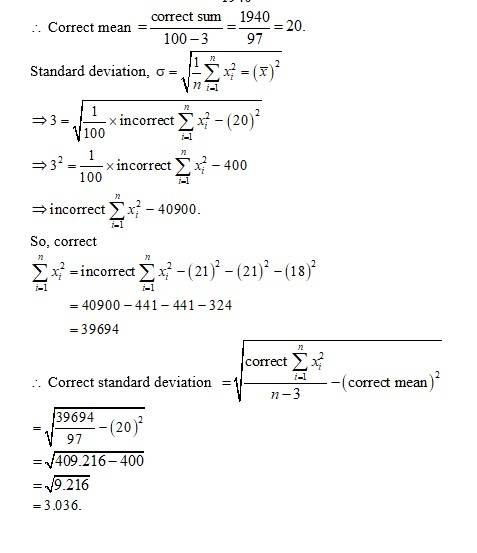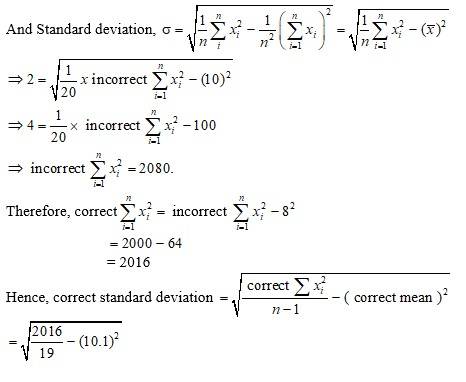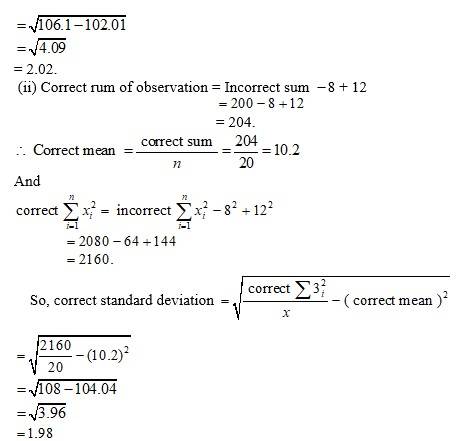Ncert Solutions Maths class 11th
Get insights from 1.6k questions on Ncert Solutions Maths class 11th, answered by students, alumni, and experts. You may also ask and answer any question you like about Ncert Solutions Maths class 11th
Follow Ask QuestionQuestions
Discussions
Active Users
Followers
New answer posted
6 months agoContributor-Level 10
68. Given, f (x) = (x + cos x) (x tan x)
So, f?(x) = (x + cos x)
Let g (x) = tan x.
So, g?(x) = 
= sec2x ______ (2)
Put (2) in (1) we get,
f?(x) = (x + cos x) (1 - sec2x) +(1 - sin x) (x- tan x)
We know that,
1 + tan2x = sec2x
Þ 1 - sec2x = - tan2x
So, f?(x) = - tan2x(x + cos x) +(x- tan x) (1 - sin x).
New answer posted
6 months agoNew answer posted
6 months agoContributor-Level 10
4. Given, 3x + 8 > 2
3x + 8 – 8 > 2 – 8
3x > – 6
x > – 2
(i) when x is an integer, x ∈ z all integer greater than – 2 are the soln. so, x = { – 1, 0, 1, 2, 3, …}.
(ii) when x is a real number, all real number greater than – 2 are the soln. so, x ( –2, ∞ )
New answer posted
6 months agoContributor-Level 10
3. Given, 5x – 3 < 7.
5x – 3 + 3 < 7 + 3
5x< 10
x< 2.
(i) when x ∈ z, i. e, x is an integer all integers less than 2 are the soln so, x = {…., – 3, – 2, – 1, 0, 1}
(ii) when x ∈ R i, e x is a real number all t real number less than 2. are the soln so, x∈ (– ∞, 2)
New answer posted
6 months agoContributor-Level 10
2. – 12 x> 30.
Dividing both sides by 12 we get,
Multiplying both side by ( – 1) the inequality will change.
i e, x< = – 2.5
(i) As x is a natural number, the soln of the given inequality does not exist in natural numbers.
(ii) As x is an integer, the soln of the given inequality will be all the integer less than – 5/2
i. e, – 3, – 4, – 5, ….
New answer posted
6 months agoContributor-Level 10
1. 24x < 100.
Dividing both sides by 24 we get,
x< = 4.166
(i) As x is a natural no the soln of the given inequality are 1, 2, 3, 4.
(ii) As x is an integer the soln of the given inequality are 4, 3, 2, 1, 0, 1, 2, 3, ….
New answer posted
6 months agoContributor-Level 10
34. Given, n = 100.
incorrect mean ( ) = 20.
incorrect standard deviation (σ) = 3
We know that,
So, incorrect sum of observation = 2000
Correct sum of observation
= 1940

New answer posted
6 months agoContributor-Level 10
33. C.V in mathematics =
C.V in Physics =
C.V in chemistry =
Chemistry has the highest variability and mathematics has the lowest variability.
New answer posted
6 months agoContributor-Level 10
32. (i) Given, n = 20.
Incorrect mean
Incorrect standard deviation
We know that,
So, incorrect sum of observation = 200.
correct sum of observation =200 – 8 = 192
And correct mean


New answer posted
6 months agoContributor-Level 10
31. For n observations x1, x2,……., xn .
We have mean =
and variance =
Let yi be the new observations with same n.
So, yi = axi (3)
Now mean,
So
And, putting (3) and (4) in (2) we get,
Hence, the mean and variance of ax1, ax2, ……, axn are and a2 σ2 .
Taking an Exam? Selecting a College?
Get authentic answers from experts, students and alumni that you won't find anywhere else
Sign Up on ShikshaOn Shiksha, get access to
- 65k Colleges
- 1.2k Exams
- 679k Reviews
- 1800k Answers
